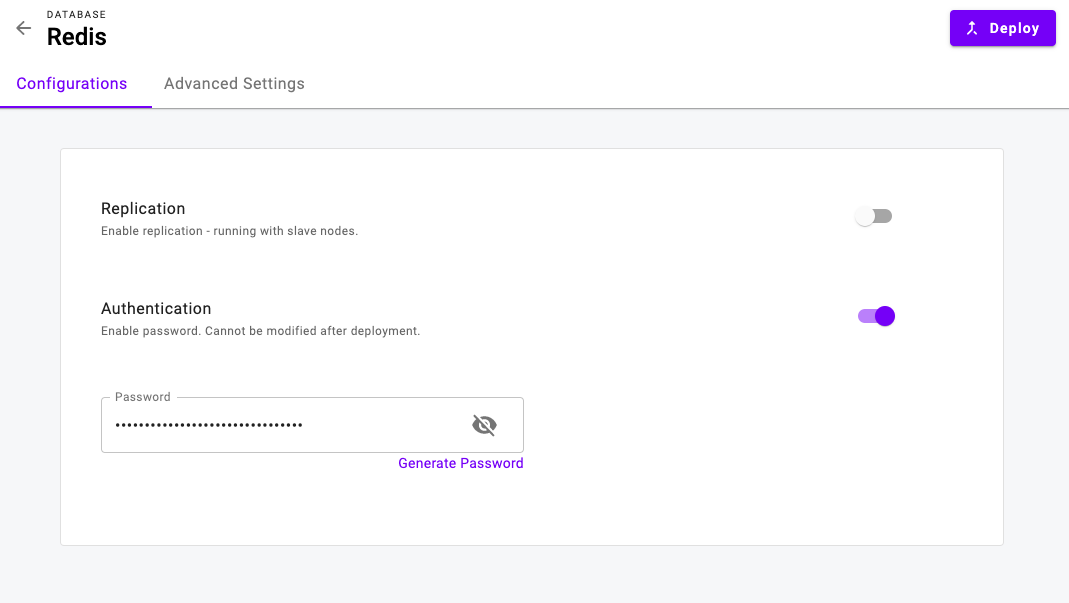Redis
Redis is an open source (BSD licensed), in-memory data structure store, used as a database, cache and message broker. It supports data structures such as strings, hashes, lists, sets, sorted sets with range queries, bitmaps, hyperloglogs, geospatial indexes with radius queries and streams.
Create a Redis Data Store#
All Redis servers are 100% dedicated to your environment.
- Click on the Create Service button at the top right of your environment.
- Click on the From Catalog tab at the top right.
- Click on the Redis option in the list.
- Optionally enable auth and enter or generate your desired
Passwordvalue.

- Click on the Deploy button at the top right and wait until the release is successful.
- Once deployed, click on the Access Tab to read the access related options.
Access Your Redis Instances#
You may only access your Redis Instance from services running in the same environment. Learn more about how to connect to your Redis Instance under the Access Tab.
Redis Advanced Options#
Enable Replication#
Enabling replication turns on a separate endpoint for Redis readonly instances.
You can enable replication under the Configurations tab when Creating a Redis service.
You may not enable this after the service has been created.
It's recommended to enable Replication in production environments.
Read more about redis replication here.
(Storage) Persistence#
Redis has an optional (Storage) Persistence and Volume Size options available under the Advanced Options Tab.
